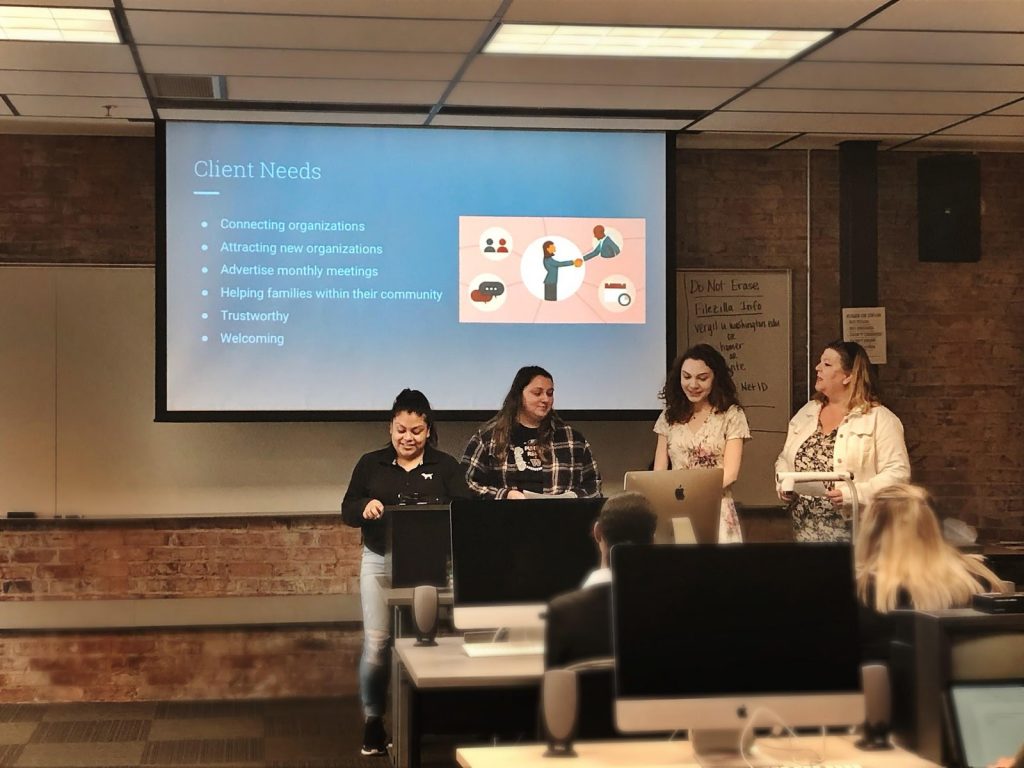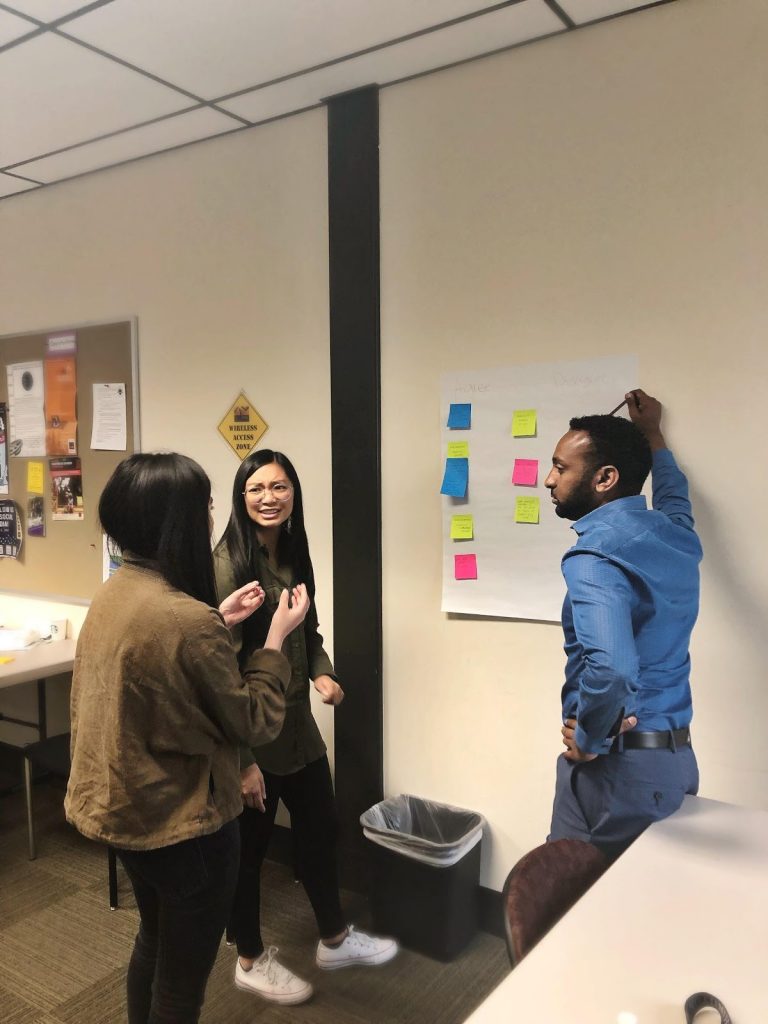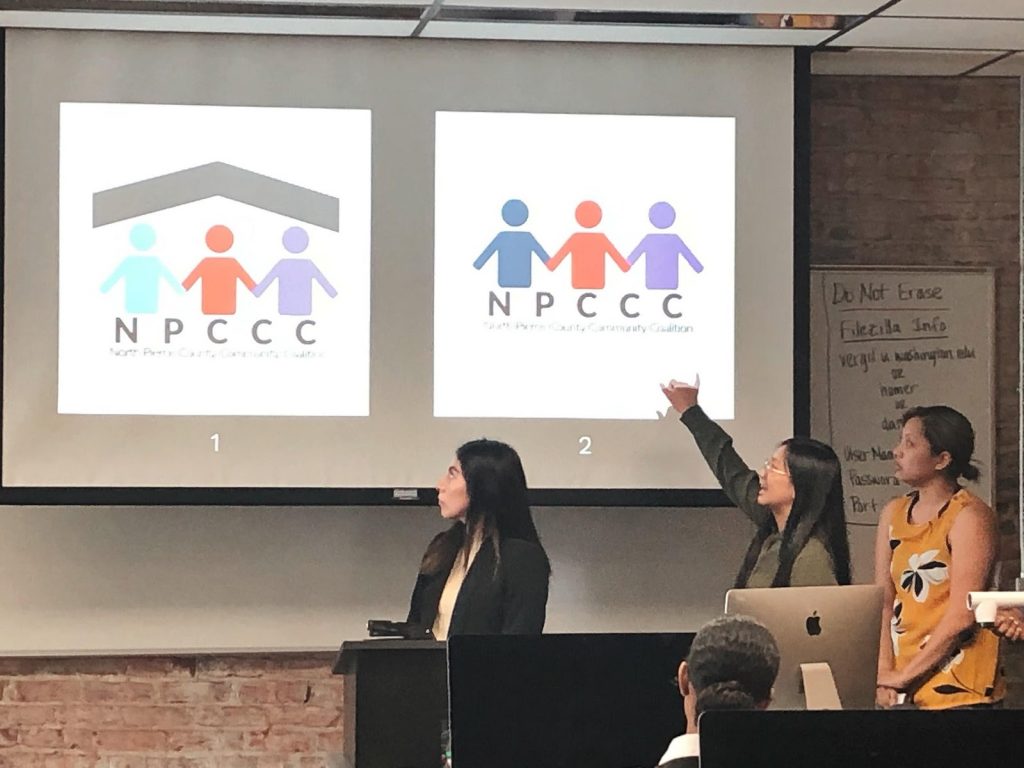Main Content
Students from TCOM 420 applied their design skills to create a website for the North Pierce County Community Coalition. Both groups benefited. The coalition gained an online presence tailor-made for their users. Students gained a deeper appreciation for ongoing work to alleviate deep community needs.

When Dr. Robin Evans-Agnew, a UW Tacoma nursing professor who has been working with NPCCC for the past few years, introduced this community project to Dr. Sun, she seized the opportunity as a proponent of “building to think and testing to learn.” She was excited to be able to land at the center of a local community to foster student learning through an impactful project.
Throughout spring quarter, four student teams worked to design prototype websites for NPCCC. They attended coalition meetings, asking questions to discern client needs and design goals. Students also conducted audience analysis. They crafted personas to represent different types of users who might want to connect with NPCCC.
Through observation and feedback, students worked with the Coalition to better define their goals and aims. NPCCC clarified that their mission was to network with other organizations to provide coordinated services for families. This differed from simply volunteering, as some students had initially thought.

The member organizations of the North Pierce County Community Coalition (NPCCC) had a problem. They spent their days connecting youth and families in the Fife, Milton, and Edgewood communities to resources. Believing that joined-up efforts are more impactful than siloed services, they came together to form NPCCC.
But no one knew how to join them. Not even Kim Roscoe, the Mayor of Fife. She remarked at a meeting with NPCCC representatives, “You’re doing great work, but I can’t find you because you don’t have a website.” Their non-existent online presence compromised their mission. It limited their ability to connect and collaborate with local partners – including businesses, schools, community organizations, non-profits, and residents – to improve the wellbeing of North Pierce families.
Fortunately, Dr. Huatong Sun and her students in TCOM 420 Advanced Web Design were looking for an opportunity to put their human-centered design skills into practice.

According to Dr. Sun, the process of empathizing with the Coalition and its audience also opened students’ eyes to community needs. “We were shocked to learn that because of rapid gentrification in an industrial-rural community one hour away from two global tech giants, low-income immigrant families were squeezed into motel rooms with a monthly rent that could have paid a three-bedroom townhouse near the campuses of the two giants ten years ago. It was an eye-opening experience for students.”
Given their demanding work to meet these community needs, NPCCC representatives emphasized their desire for an easy-to-maintain website. Still, student teams thought a clean and dynamic website would provide much-needed information about upcoming meetings for potential partners. It also had to be easy to navigate and include a mobile-friendly directory of links to resources for families with limited technology access.
On May 21st, each team presented wireframes and prototypes of their designs to NPCCC representatives. The members in attendance were impressed that the teams had gone above and beyond the design briefs, creating original logos and branding for the Coalition in addition to the website prototypes. They also appreciated the live calendar plug-in, which would enable organizations interested in joining with NPCCC to get involved. Some changes suggested were to de-emphasize a ‘donate’ call to action button, and add acknowledgements to the organizations already involved in the Coalition.
After receiving feedback and making changes, the students presented their beta designs several weeks later at an NPCCC board meeting. The community partner was impressed, NPCCC chair of that time Nancy Fitta and Secretary Kristi Ceder, stating that they’d have a hard time choosing a final website to adopt. One of the students, Jacob Romney, even volunteered to help them implement their chosen website after the class is over. The new website will be released shortly.
Overall, NPCCC board felt like their needs – and even needs they didn’t anticipate from their audience – had been met. The board members reportedly asked Dr. Sun to give all students As. Perhaps an A for Action-informed learning?
Reflecting on this process, Dr. Sun remarked: “As a teacher who’s taught this course for the seventh time in this community, what really struck me from this project is that we thought WE were to help and transform the community as designers. But in the end, we gained a new perspective and we were transformed into better designers and better selves. Indeed, empathizing from design thinking is a process to change and refine one’s point of view.”
